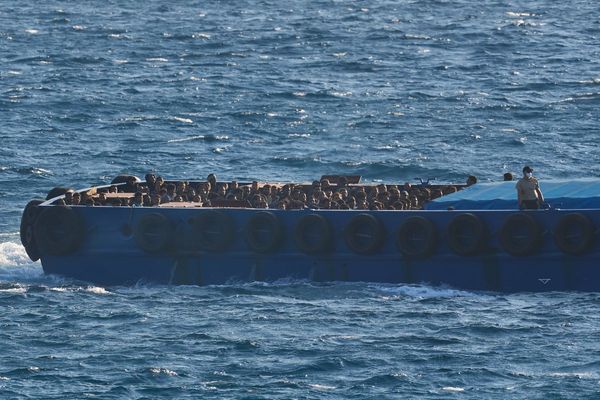After Russia’s February 2022 invasion of Ukraine, the US sanctioned several dozen people, companies, organizations and luxury yachts from Russia. Among those targeted was Russian President Vladimir Putin.
Sanctions are a foreign policy tool used by the US and others to influence the behavior of other countries as an alternative to military action. The Treasury Department listed 37 sanction programs as of March 2022, including one against Cuba dating back to 1962.
While sanctions are often mentioned in news reports, it can be challenging to understand what it means for a country to be sanctioned and how sanctions work in practice.
What are sanctions?
Sanctions refer to federal government actions restricting economic activity between the US and foreign entities, including people and other nations. These restrictions, including blocking off assets and trade, are made for reasons other than business, such as foreign policy or national security. This makes sanctions distinct from trade tariffs directed at specific countries or regions.
Sanctions are usually issued as a program of restrictions. The programs stem from executive orders, legislation or other government actions to address specific issues or behaviors.
For example, since 1979, the US has had an ongoing sanction program against Iran. That program began after the Iran hostage crisis that same year. It has since evolved to encourage Iran to abandon its pursuit of a nuclear weapon program.
Who (or what) is currently sanctioned by the US?
Sanctions vary in scope and targets. Most of the sanctions programs listed by the Treasury Department refer specifically to nations or regions of the world, including Cuba, North Korea and Iran. Other sanction programs are issue-specific, such as cybersecurity, election security and terrorism.
One of the more recent sanction programs in the news is the US actions against Russia.
In 2014, President Barack Obama issued an executive order declaring a national emergency in response to Russia’s invasion and annexation of Ukraine’s Crimea region. Along with subsequent executive orders, it created a sanctions program that targeted Russia’s financial, energy and defense sectors while prohibiting trade with Crimea. The sanctions program remained active under President Donald Trump.
In April 2021, President Joe Biden issued another executive order that started a new sanctions program responding to “harmful foreign activities of the Government of the Russian Federation.” After Russia’s February 2022 invasion of Ukraine, the US expanded that executive order to target several dozen people, organizations, companies, government agencies and even luxury yachts. Among those targeted was Russian President Vladimir Putin.
How are sanctions enforced?
Any American resident, organization or company with a presence in the US can be fined for violating the rules of a sanction program. A division of the Treasury Department issues penalties to sanction violators.
Since 2008, the agency has issued $6.5 billion in penalties stemming from 357 violations. Those penalties are usually assessed after settlement. The heftiest fine was $1.1 billion assessed to France-based BNP Paribas, a banking company with branches in the US, accused of processing transactions with sanctioned individuals in Sudan, Iran, Cuba and Burma.
Which parts of the US government are involved in the sanction process?
Sanctions come from executive orders, legislation and, in some cases, United Nations Security Council resolutions.
Several federal departments are involved with the sanction process.
The State Department develops sanction policy by gathering international support and working with agencies in other departments that implement the sanctions. The Office of Foreign Assets Control in the Treasury Department runs and enforces most sanction programs, issuing monetary penalties on violators. That agency publishes a regularly updated list of sanctioned people and other organizations or companies. The agency also publishes additions, updates and removals to the programs.
A division of the Department of Commerce enforces trade export sanctions, coordinating with the State, Defense, and Energy departments. That division, the Bureau of Industry and Security, outlines export restriction rules on sanctioned countries, such as Cuba, Iraq, North Korea, Russia, Belarus, Iran and Syria.
Other departments involved in implementing sanctions are the Department of Defense, which restricts arms sales, and the Department of Justice, which prosecutes criminal sanction-related cases.
Learn more about American foreign affairs and military and defense activity and get the data directly in your inbox by signing up for our newsletter.







